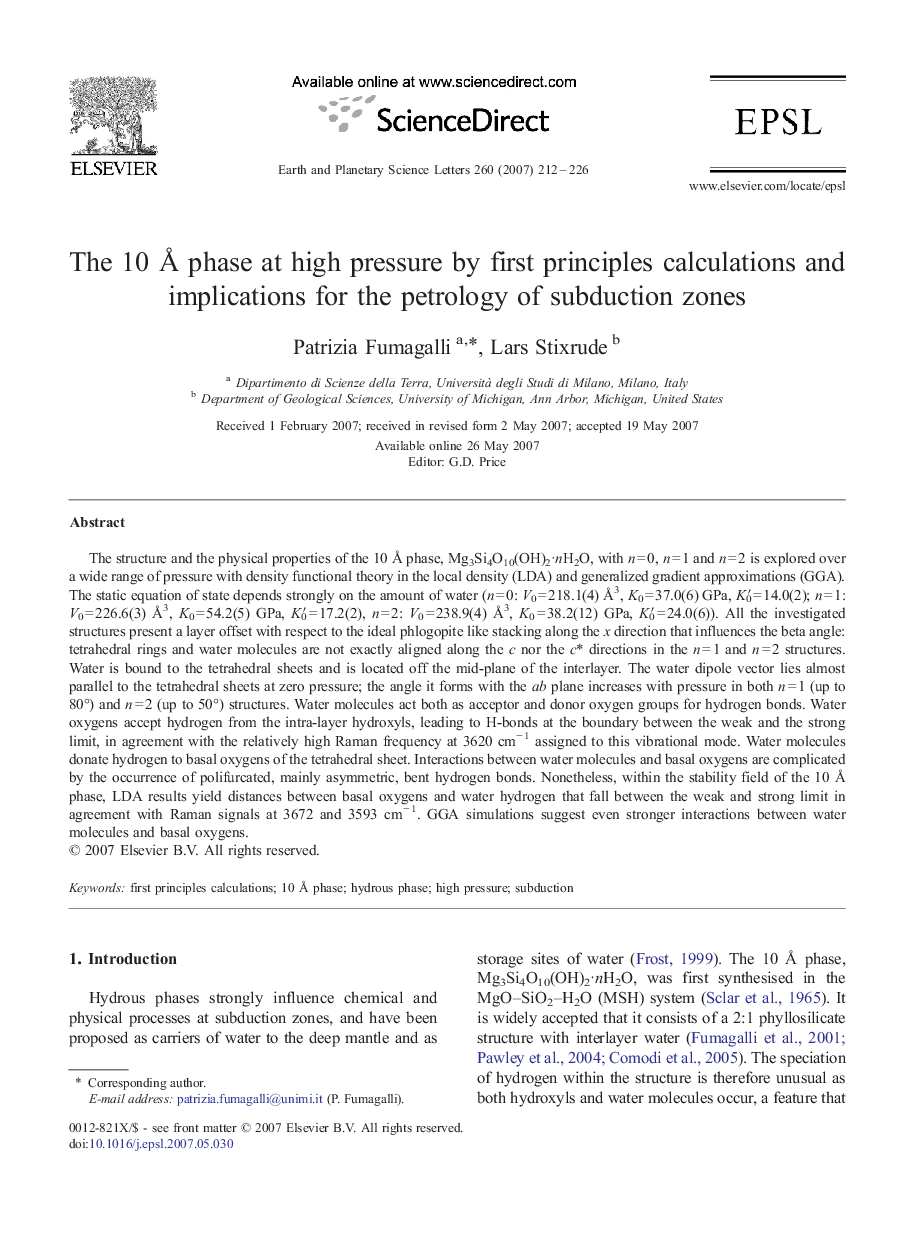| کد مقاله | کد نشریه | سال انتشار | مقاله انگلیسی | نسخه تمام متن |
|---|---|---|---|---|
| 4680262 | 1634915 | 2007 | 15 صفحه PDF | دانلود رایگان |

The structure and the physical properties of the 10 Å phase, Mg3Si4O10(OH)2·nH2O, with n = 0, n = 1 and n = 2 is explored over a wide range of pressure with density functional theory in the local density (LDA) and generalized gradient approximations (GGA). The static equation of state depends strongly on the amount of water (n = 0: V0 = 218.1(4) Å3, K0 = 37.0(6) GPa, K0′ = 14.0(2); n = 1: V0 = 226.6(3) Å3, K0 = 54.2(5) GPa, K0′ = 17.2(2), n = 2: V0 = 238.9(4) Å3, K0 = 38.2(12) GPa, K0′ = 24.0(6)). All the investigated structures present a layer offset with respect to the ideal phlogopite like stacking along the x direction that influences the beta angle: tetrahedral rings and water molecules are not exactly aligned along the c nor the c⁎ directions in the n = 1 and n = 2 structures. Water is bound to the tetrahedral sheets and is located off the mid-plane of the interlayer. The water dipole vector lies almost parallel to the tetrahedral sheets at zero pressure; the angle it forms with the ab plane increases with pressure in both n = 1 (up to 80°) and n = 2 (up to 50°) structures. Water molecules act both as acceptor and donor oxygen groups for hydrogen bonds. Water oxygens accept hydrogen from the intra-layer hydroxyls, leading to H-bonds at the boundary between the weak and the strong limit, in agreement with the relatively high Raman frequency at 3620 cm− 1 assigned to this vibrational mode. Water molecules donate hydrogen to basal oxygens of the tetrahedral sheet. Interactions between water molecules and basal oxygens are complicated by the occurrence of polifurcated, mainly asymmetric, bent hydrogen bonds. Nonetheless, within the stability field of the 10 Å phase, LDA results yield distances between basal oxygens and water hydrogen that fall between the weak and strong limit in agreement with Raman signals at 3672 and 3593 cm− 1. GGA simulations suggest even stronger interactions between water molecules and basal oxygens.
Journal: Earth and Planetary Science Letters - Volume 260, Issues 1–2, 15 August 2007, Pages 212–226